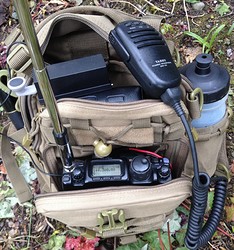My 3.7 cents worth on this subject…I purchased my FT817 in 2002 for around $750. Used it initially for VHF portable for Field day but mostly it was used initially for June VHF contests and pre-SOTA VHF hikes. Also used it for other portable HF contests a bit.
Had to replace the speaker once (I am hard of hearing in my old age), and also bypassed the DC connector (it was easier than actually replacing it, and won’t ever wear out I figure). I fixed the power plug problem by wiring directly to the PCB board, eliminating the internal plug. I use an external LIPO battery to power the radio…rarely use the internal AA battery option (emergency use only…"Dang! I forgot the LIPO!).
I’ve dropped it, stepped on it, rained on it, frozen it on hilltops in the winter, and baked it in 115 degree heat on many a desert summit. This radio is a TANK.
I logged around 3300 QSO’s from when I bought it in 2002 until I became SOTA active in 2013.
Since SOTA I have made around 17,000 QSO’s with it from SOTA summits (5 watts or less) with a home brew Link-Dipole on a 13 ft mast. I’ve made over 300 non North America contacts with it including many s2s contacts into VK, ZL, and Europe. I pack light, so the radio weight never has been a problem for me, even on 15 mile hikes.
So…at least 20,300 QSO’s divided into $750 is about 3.7 cents per QSO, not counting any battery costs over the years, and the speaker replacement cost Seven dollars.
Hard to believe I will ever own a radio as inexpensive, tough or as long lasting as my old 817…
The FT817 may not be for everyone, but it sure fits the bill for me…which I figure is the bottom line.
The only real question in my mind it who is going to die first? The 817…or me…we shall see.
c u from the peaks!
Pete
WA7JTM
 ).
).
